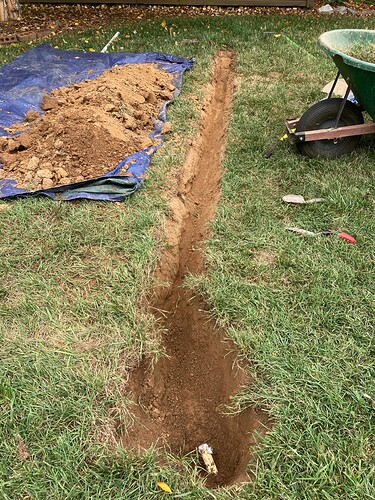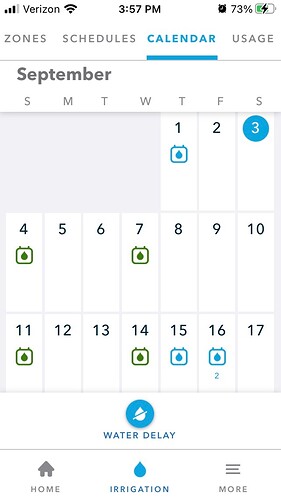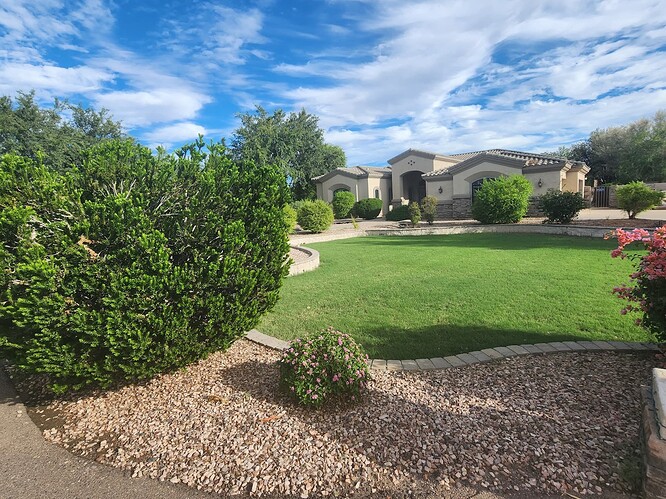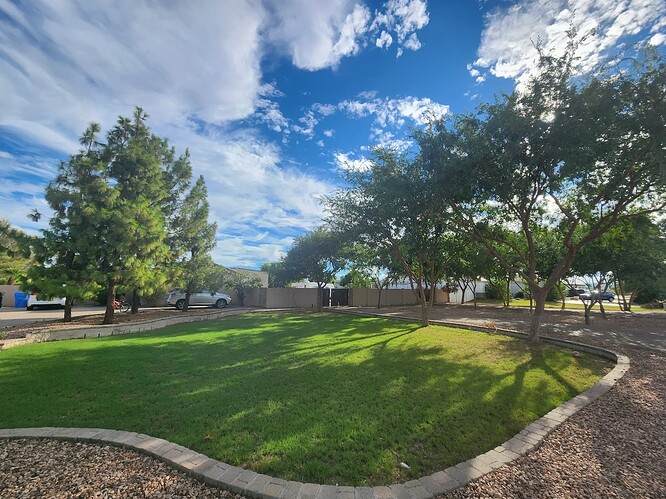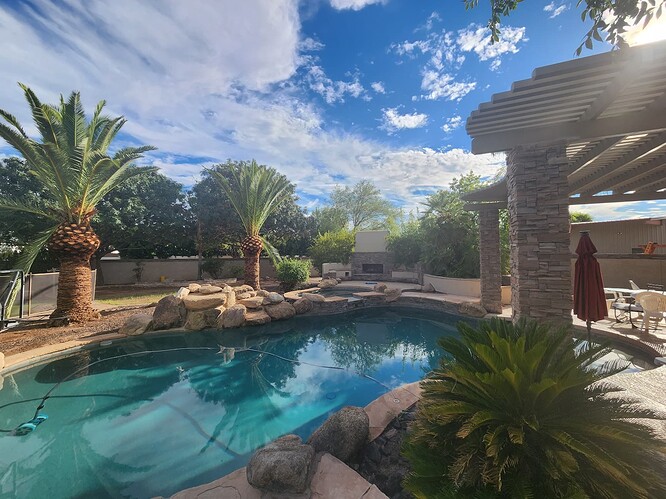I’ve had my Rachio for about 6 months - all through the summer and spring at least. I’ve determined that it simply isn’t smart enough, no matter how much “hyper weather” data it has, nor the info I’ve put into the system, to actually water my property often enough or long enough to deal with the actual weather conditions. I have actual proof that it is clueless as to what is going on in my yard. I have 5 zones on my lawn and another on a berm of border landscaping plants and trees, and have done a detailed yard map, with the type of grass, the type of sprinkler heads, and the type of soil and slope. I’ve even put in the kind of flow rate the heads have! Today I finally got around to moving two sprinkler heads based on the changes in our property. That necessitated digging up both heads, adding about 12’ of pipe to one of them, digging up the feeder line about 5’ for the other one, and digging new trenches to reposition them. The ONLY place there was any moisture was about 18" around the heads - everywhere else in those trenches was bone dry to the full 12" or more that I dug. See the picture of the longest trench. At the same time, Rachio said the soil moisture in that zone was 95%!!! I ran that zone for 10 mins after that to adjust the throw of the heads and after that it said the moisture was 109% - after only 10 mins. In that time, the heads on that zone (all going about 180-190deg) probably only do about 3-4 full sweeps.
I had to set the berm zone to a fixed setting because it simply didn’t water enough - so poorly that I had bushes starting to lose leaves! And the plants on that berm are 6-8 years established. Right now, the schedule shows NO watering in my lawn for almost two weeks (the blue icons). The green icons are the fixed berm schedule. This is based on “intelligence” that should have told the controller that I’ve had about 0.3" of rain in THREE WEEKS! Sure, there is a forecast of a lot of rain starting today and this coming week - but none has happened yet. There has also been all kinds of forecasted “afternoon showers” - none of which have happened on or around me. Intelligence would build a plan based on what has happened (measured) and is needed, not what might happen. It can be updated as the weather stations tell it rain has come, but it shouldn’t be built on a “might happen” scenario.
And no matter how hyper local its supposed to be, it fails spectacularly in this area. Far too often downpours will happen 1/2 mile from me (even 1/4!), but I’ll stay bone dry. That was the first failure I noticed. So I found a local weather station only about a 1/2 mile from me (in a good direction based on how the rain normally tracks)) that I tied my station to in the app. USUALLY if they get rain I will too, but not always. But the other stations in the area are spread out enough that they could get a downpour and my property would stay dry. That is a normal occurrence in this area with a small mountain ridge running through our area and the TN River and a dammed lake just to the south. I have to wonder if a station on my property would help, but again, with it building plans based on what might be, I have no confidence that would make a difference.
I’d be happy to hear how often the plan is supposed to change, because I don’t see it change much - even after all kinds of forecasted rain that never hits my property. Also, I recently got notified that due to the seasonal changes it had adjusted my schedules. That might be why there is so little watering planned - but if whoever wrote the software doesn’t know that Alabama’s summer does NOT end in August, they need to go back to the drawing board and study weather patterns of the south. We still hit the 90s in September, and are regularly in the 80s, and this is not the time of year when a significant change in the weather pattern happens as it pertains to rain. I’ve looked in the app to find a way to turn off that setting, or change it back, but haven’t yet found it. If anyone knows I’d love to hear!
I’m pretty much to the point where I’ll have to set fixed schedules like my old dumb controller, and just enjoy the app and the ability to remotely control things vs having to go to the garage. But relying on it to keep my property adequately watered has been a spectacular failure this spring and summer.
In case the pics don’t upload, here they are:

